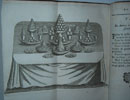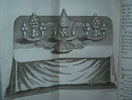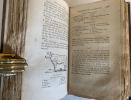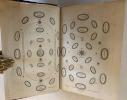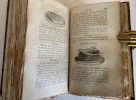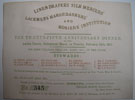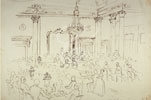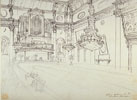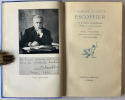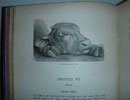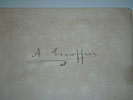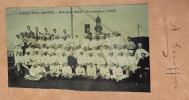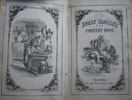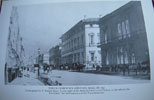DOMESTIC ECONOMY
OR A COMPLETE SYSTEM OF ENGLISH HOUSEKEEPING CONTAINING The most approved Receipts, confirmed by Observation and Practice, in every reputable Book of English Cookery now extant; besides a great Variety of others which have never before been offered to the Public. Also a va-luable Collection, translated from Productions of Cooks of Eminence who have published in France, with their respective Names to each Receipt; which, together with the ORIGINAL ARTICLES, form th emost com-plete System of HOUSEKEEPING ever yet exhibited, under the following Heads, viz. ROASTING, BOILING, MADE-DISHES, FRYING, BROILING, FRICASSES, ROGOUTS, SOUPS, SAUCES, GRAVIES, HASHES, STEWS, PUDDINGS, CUSTARDS, CAKES, TARTS, PIES, PASTIES, CHEESECAKES, JELLIES, PICKLING, PRESERVING, and, CONFECTIONARY. To which is prefixed, in order to render it as complete and perfect as possible, AN ELEGANT COLLECTION OF LIGHT DISHES FOR SUPPER,ADAPTED FOR EVERY MONTH OF THE YEAR. ALSO THE COMPLETE BREWER; CONTAINING Familiar Instructions for brewing all Sorts of Beer and Ale; including the proper Management of the Vault and Cellar. LIKEWISE THE FAMILY PHYSICIAN; Being a Collection of the most valuable and approved Prescriptions by Mead, Sydenham, Tissot, Fothergill, Elliot, Buchan, and Others. BY MAXIMILIAN HAZLEMORE. LONDON: PRINTED FOR J.CRESWICK, AND CO. 1794.
FIRST AND SOLE EDITION. 8vo. 1fep. Title page. [1] (1)+4 To the Public. (1)vi-xxiz Contents. (1)xxvi-xxxii Proper Articles to cover the Table every Month. (1)2-392. 2feps. Modern dark brown calf, with marbled boards and calf tips. Spine with raised bands gilt lines with a red label and gilt writing. Externally very good, internally age-browned throughout. Overall a nice copy of a extremely scarce book that rarely appears on the market.
- Nothing seems to be known about Hazlemore. Cagle proclaims p530.- 'This is a word for word reprint of Mary Cole's 'Lady's Complete Guide, or Cookery in all its Branches' London 1791. Oxford states on p122 exactly the same thing and wonders who the author may be. I have a copy of Cole. (see item ref: 11302 on this site) I made a comparison and after reading the notes of Mary Cole's cookery book I am struck however, by the very unusual and honest habit of Hazlemore's, to attribute and note the names of previously published authors he used, against each of his receipts. This then leads me, as a chef myself, to state my own observation, that an extremely small amount of dishes and recipes, if any at all, are original. All dishes cooked are the sum of the cook's experience of recipes already existing. If the cook has a streak of innovation, and most do, then they will possibly enhance those learned recipes. Sometimes when the cook is very good, the dishes he or she cooks are exceptional and quite different and bear only a passing nod to the fundamentals of the original. The dishes cooked today by great chefs can still be ascertained in the recipes in this and other antiquarian cookery books, and this in turn reinforces a universal truism, that everything changes but ultimately remain the same.




click on image to enlarge

Antiquarian category
ref number:
11101 







